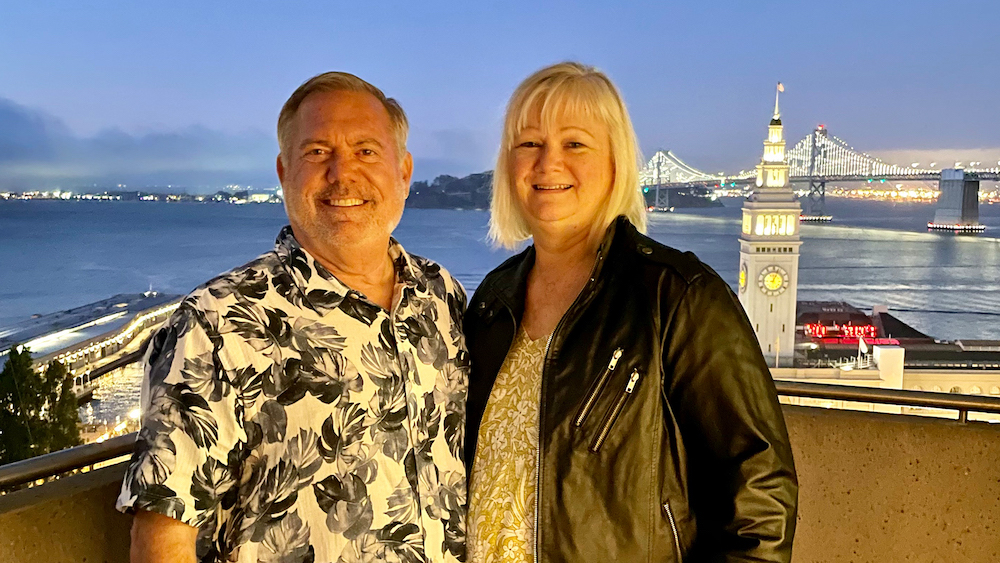
John and Claire Vassberg have both been impacted by Texas A&M University in different ways, and their experiences have inspired them to establish a scholarship for students in the Department of Aerospace Engineering.
When Claire was seven years old, her older brother began his freshman year at Texas A&M. Since then, she held the university in high esteem and considered it very important to her. Claire didn’t end up attending Texas A&M herself, but she made sure it became a part of her heritage.
“I have a strong tie to Texas A&M, and it almost feels like I went there, though I didn’t,” Claire said. “It runs in my blood.”
John did attend Texas A&M. He grew up on a farm in south Texas with plans of farming as a lifelong career, but he also wanted to attend college to mature and grow personally before settling down on the land. Having always been intrigued by flying and the crop dusters his best friend’s family owned, he decided to study aerospace engineering in college.
By his sophomore year, John caught the attention of several professors in his department, who noticed his eagerness to learn and natural inclination toward aerodynamics. They offered him a spot as a student researcher for the department, a position usually reserved for juniors and seniors.
Dr. Leland Carlson was a professor whose influence was transformative in John’s life. Throughout his junior and senior years, John took every class Carlson offered. He developed a greater passion for aerodynamics, which altered his future entirely.
“Dr. Carlson changed my trajectory from farming to a career in aviation, and he kicked me in the right direction,” John said. “He recommended my first job, which was the best job in the world, and I’ve had it ever since.”
John remained at Texas A&M for his master’s degree, where he continued to take Carlson’s classes. He received a full-time job offer from Douglas Aircraft Company in Long Beach, California. Realizing that he would be working closely with the aerodynamicists he had studied in his textbooks, John eagerly took the job.
Over the years, John worked with many early-career engineers and student interns. He began to see a growing trend in academia of inadequate understanding of aerodynamics. To address this issue, John established the Claire and Dr. John C. Vassberg ’80 Aerodynamics Endowed Scholarship.
John believes very strongly in giving back — not just to the university, but also through his career by always trying to lift up the young ones and guide them to greatness.
The Vassbergs’ main hope for the scholarship is to reward and encourage future aerodynamicists who will be transformative in the industry. They have ensured the scholarship will do just that by setting it aside specifically for those who are studying and excelling in aerodynamics classes with an overall GPA of 3.5 or higher.
Scholarship recipients won’t have to look far for inspiration. John has contributed enormously to the knowledge and research of aerodynamics throughout his career. He owns dozens of patents related to aerodynamic technologies, including the Advanced Winglets of the Boeing 737 MAX. He has also worked on the design and development of the Boeing 747-8, the 787 Dreamliner and numerous advanced research vehicles under study within Boeing Phantom Works.
To promote cooperative aeronautical research on a global scale, John worked with Mark DeHaan, Melissa Rivers and Richard Wahls to develop the Common Research Model (CRM), which enables researchers to use a standard model in their research. His work was honored with the American Institute of Aeronautics and Astronautics International Cooperation Award in 2017. This September, his continuing efforts to foster international collaborations were recognized by the International Council of the Aeronautical Sciences (ICAS) at ICAS 2022 in Stockholm with the Maurice Roy Award.
In 2000, John founded the Drag Prediction Workshop (DPW) series, which he still runs today. The DPW utilizes the CRM as teams of people solve the same set of problems and present their solutions to the group. Since it was born, DPW has grown to be international, with many other workshops modeled after the same structure. The data are made available to the public domain, and as a result, over a thousand technical papers have been produced. The CRM and the numerical workshop ecosystems continue to expand.
“We collect all of the results, put them on the same plot and show how members of industry are comparing with each other,” John said. “This is something that was never done before. Here, we are working not only with outside individual groups, but across the whole world.”
His drive to change the world on a global scale did not stop with the CRM or DPW. In 2021, he joined JetZero, a company that is working with NASA to create sustainable aircraft with the eventual goal of zero-emission flights.
Though his endeavors have been many, John never forgot his roots at the family farm. In congruence with an essay he wrote his junior year at Texas A&M about using wind turbines for green energy, he brought engineering back to the farm, where 10 large wind turbines now jut 525 feet into the sky, producing two-and-a-half megawatts of green energy each.
Just as the guiding hand of a professor propelled John into his career, the Vassbergs are hopeful that their gift to Texas A&M will inspire greatness and open opportunities for aerospace engineering students with a lifetime of ingenuity ahead of them.
“I think this scholarship will impact a few students now,” John said. “Hopefully, it will explode into having a greater influence in the future.”
How to Give
Endowments supporting the students in the college have an immeasurable impact on their education. If you are interested in supporting the College of Engineering and its departments or would like more information on how you can give, please contact one of our development officers.